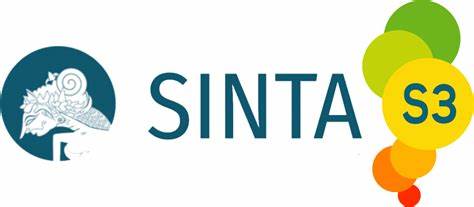THE MAPPING OF MEDIATING NEGATIVE WASHBACK OF THE NATIONAL EXAMINATION
DOI:
https://doi.org/10.22460/eltin.v11i1.p87-98Keywords:
High-stakes testing, Indonesia, pressure, secondary schoolAbstract
The washback study is sorely necessary in the situation of the National Examination system, which selects candidates for the next level of education, due to its gatekeeping role in influencing test-takers' academic futures and supposedly life courses and in allocating power and instituting social order. This qualitative study explores the impact of the Indonesian national examination and how the washback interlinks students, teachers, and parents. The research aims to uncover (1) the objective of the national examination, (2) the washback impact of this high-stake test on students, teachers, and parents, (3) how teachers and parents perceived to be under pressure from the national examination while affecting the students as test-takers. This case study examined the three actors as stakeholders at play through the lens of the parents, teachers, and students as test-taker by conducting semi-structured interviews with teachers and parents and also focus group discussion with students. We probe their Indonesian National Examination experiences based on their beliefs and practices as individuals or professionals. The findings indicated that the objectives of the national examination for the participants were for determining not only the students’ future but also teachers and schools. It then led the participants to have high level of anxiety in facing the national examination. Their practices of teaching, learning and parents were heavily influenced by the national examination.
References
ADB, & OECD. (2015). Education in Indonesia: Rising to the challenge. OECD Publishing Paris.
Alderson, J. C., & Wall, D. (1993). Does washback exist?. Applied linguistics, 14(2), 115-129.
Ali, M. M., & Hamid, M. O. (2020). Teaching English to the test: Why does negative washback exist within secondary education in Bangladesh? Language Assessment Quarterly, 17(2), 129–146.
Alqahtani, F. (2021). The Impact of Language Testing Washback in Promoting Teaching and Learning Processes: A Theoretical Review. English Language Teaching, 14(7), 21–26.
Amrein-Beardsley, A., Berliner, D. C., & Rideau, S. (2010). Cheating in the first, second, and third degree: Educators’ responses to high-stakes testing. Education Policy Analysis Archives, 18, 14–14.
Bray, M. (2006). Private supplementary tutoring: Comparative perspectives on patterns and implications. Compare, 36(4), 515-530.
Coniam, D., & Falvey, P. (2018). Introduction and background to high-stakes assessment. High-Stakes Testing: The Impact of the LPATE on English Language Teachers in Hong Kong, 3–9.
Creswell, J. W. (2014). Research design: Qualitative, quantitative, and mixed methods approaches (4th ed.). SAGE Publication, Inc.
Dawadi, S. (2020). Parental involvement in national EFL test preparation. RELC Journal, 51(3), 427–439.
Endriyati, R., & Anggraeni, D. A. (2019). The washback effect of national examination on English language teaching in junior high school in Indonesia.
Epstein, J. L. (1985). Home and school connections in schools of the future: Implications of research on parent involvement. Peabody Journal of Education, 62(2), 18-41.
Furaidah, F., Saukah, A., & Widiati, U. (2015). Washback of English national examination in the Indonesian context. TEFLIN Journal, 26(1), 36–58.
Harlen, W. (2010). Professional learning to support teacher assessment. In Developing teacher assessment, 100-129. Berkshire: Open University Press.
Hattie, J. (2003). Teachers make a difference: What is the research evidence? ACEResearch, 1-17.
Jackson, M., Khavenson, T., & Chirkina, T. (2020). Raising the stakes: Inequality and testing in the Russian education system. Social Forces, 98(4), 1613–1635.
Koretz, D. (2017). The Testing Charade. In The testing charade: Pretending to make schools better. University of Chicago Press.
Kuang, Q. (2020). A Review of the Washback of English Language Tests on Classroom Teaching. English Language Teaching, 13(9), 10–17.
Larsson, M., & Olin-Scheller, C. (2020). Adaptation and resistance: Washback effects of the national test on upper secondary Swedish teaching. The Curriculum Journal, 31(4), 687–703.
Marton, F., & Säljö, R. (1976). On qualitative differences in learning: I—Outcome and process. British journal of educational psychology, 46(1), 4-11.
Min, J., & Park, M. (2020). Investigating Test Practices and Washback Effects: Voices from Primary School English Teachers in Hong Kong. The Korea English Language Testing Association, 15, 77–97.
Pearson, I. (1988). Tests as levers for change. ESP in the Classroom: Practice and Evaluation, 128, 98–107.
Rahman, K. A., Seraj, P. M. I., Hasan, M. K., Namaziandost, E., & Tilwani, S. A. (2021). Washback of assessment on English teaching-learning practice at secondary schools. Language Testing in Asia, 11(1), 12.
Shohamy, E. (2020). The power of tests: A critical perspective on the uses of language tests. Routledge.
Smith, M.L. (1991). Pu to the test: The effects of external testing on teachers. Educational Researcher, 20(5), 8-11.
Spratt, M. (2005). Washback and the classroom: The implications for teaching and learning of studies of washback from exams. Language Teaching Research, 9(1), 5–29.
Stobart, G. (2008). Attitudes and assessment. Assessment in Education: Principles, Policy & Practice, 15(1), 1–2. https://doi.org/10.1080/09695940701875948
Tsang, C. L., & Isaacs, T. (2021). Hong Kong secondary students’ perspectives on selecting test difficulty level and learner washback: Effects of a graded approach to assessment. Language Testing, 39(2), 212–238.
Wyse, D., Jones, R., Bradford, H., & Wolpert, M. A. (2018). Teaching English, language and literacy. Routledge.
Yeager, D.S., Hanselman, P., Walton, G.M., Murray, J.S., Crosnoe, R., Muller, C., Tipton, E., Schneider, B., Hulleman, C.S., Hinojosa, C.P. and Paunesku, D., (2019). A national experiment reveals where a growth mindset improves achievement. Nature, 573(7774), 364-369.





